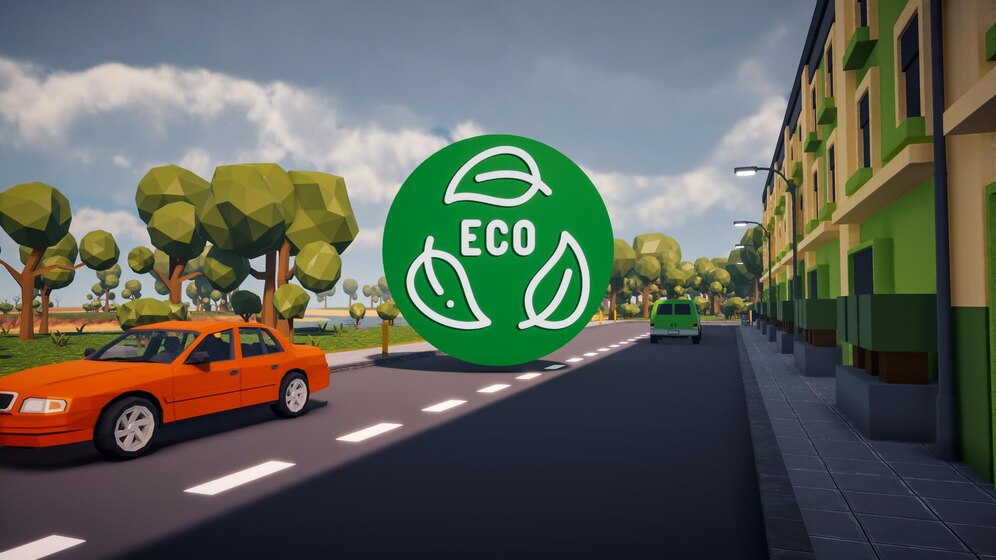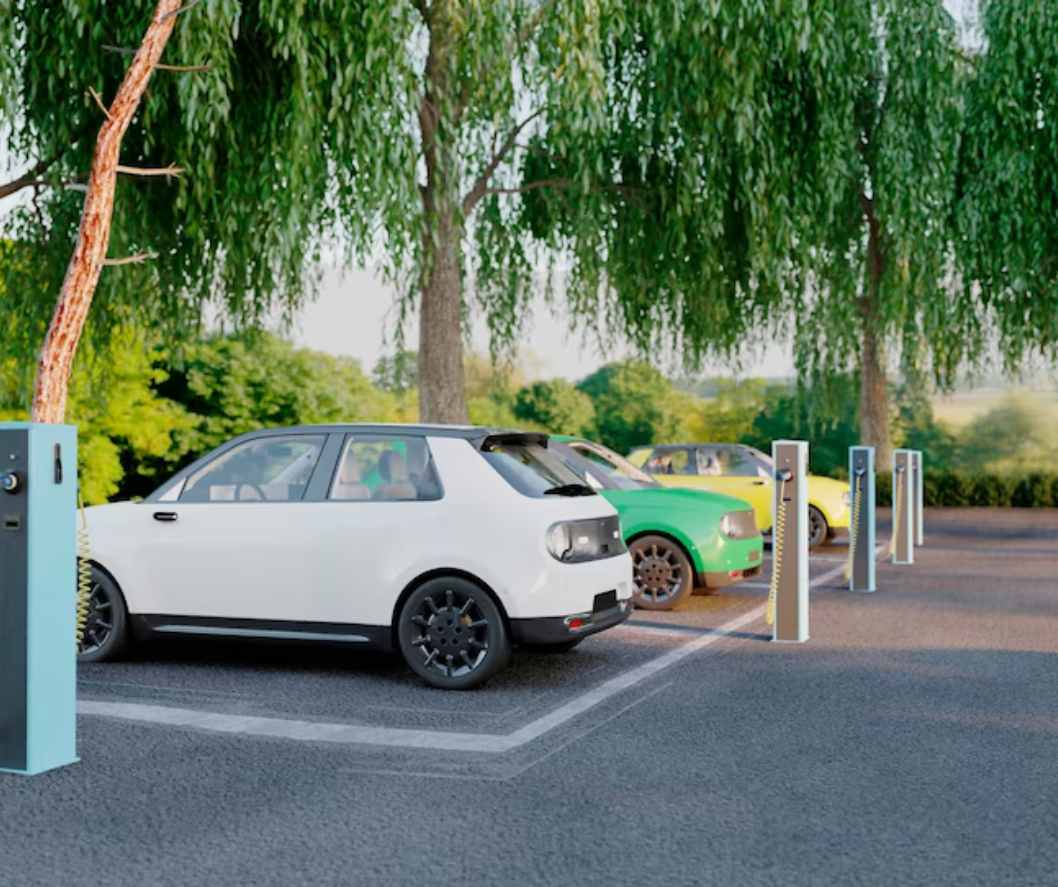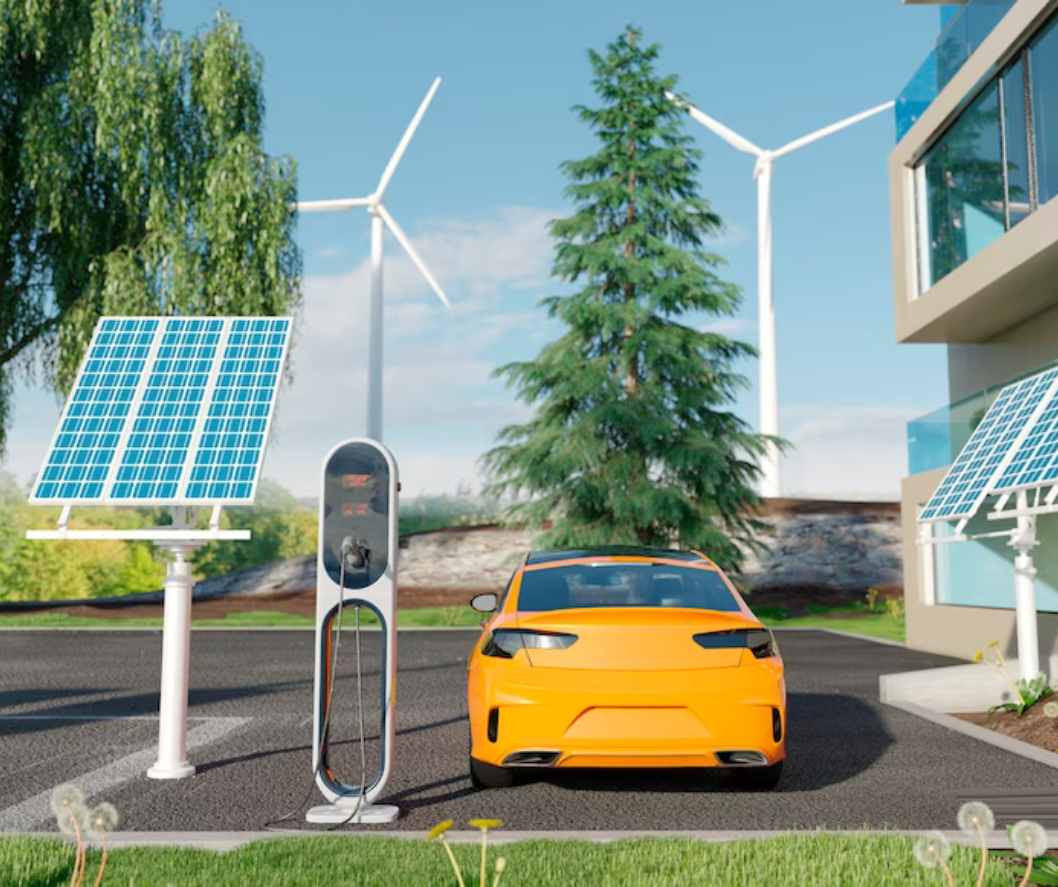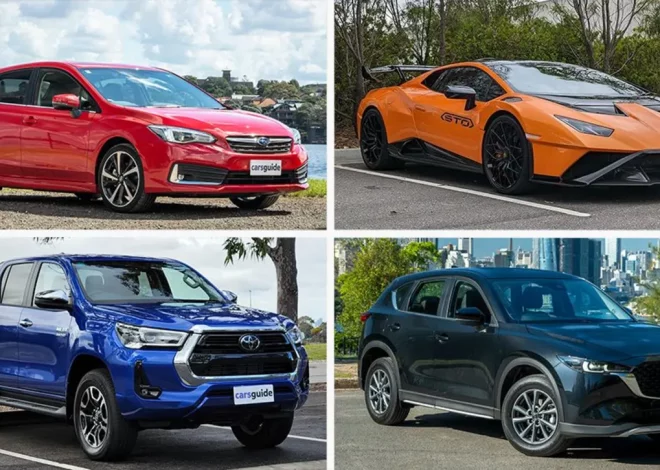
Eco-Friendly Commuting: The Role of Sustainable Vehicle Types in Modern Society
In a world increasingly concerned about environmental sustainability, the way we commute has taken center stage. Eco-friendly commuting, powered by sustainable vehicle options, has emerged as a pivotal solution to address the growing concerns about environmental impact. Understanding the significance of eco-friendly commuting and the various sustainable vehicle types becomes essential as we transition towards a greener future.
The Evolution of Transportation
Historical Overview of Transportation Methods
The evolution of transportation is a testament to human innovation. From ancient times, when foot travel and animal-drawn carts were the norm, to the industrial revolution’s introduction of steam-powered locomotives, transportation has evolved to meet the needs of a changing world.
Emergence of Fossil Fuel-Powered Vehicles
The 20th century witnessed a paradigm shift with the mass production of fossil fuel-powered vehicles. While these vehicles provided unprecedented mobility, they also brought about environmental challenges due to the combustion of fossil fuels.
Environmental Consequences of Conventional Transportation
Conventional transportation methods have led to dire consequences such as air pollution, depletion of finite resources, and contributions to global warming. These consequences have driven the search for sustainable alternatives.
Understanding Eco-Friendly Commuting
Definition of Eco-Friendly Commuting
Eco-friendly commuting refers to the practice of using transportation modes that have minimal negative impact on the environment. This includes modes that produce fewer emissions, utilize renewable energy sources, and promote resource efficiency.
Benefits of Adopting Sustainable Commuting Practices
Reduction in Carbon Emissions
One of the primary benefits of eco-friendly commuting is reducing carbon emissions. Traditional vehicles emit greenhouse gases that contribute to climate change. Opting for sustainable commuting options helps lower this impact significantly.
Improved Air Quality
Eco-friendly commuting leads to improved air quality in urban areas. Traditional vehicles emit pollutants that degrade air quality and pose health risks. Sustainable options produce little to no tailpipe emissions, enhancing the air quality we breathe.
Decreased Traffic Congestion
Sustainable commuting often involves alternatives such as public transportation, cycling, or walking. These modes reduce the number of individual vehicles on the road, alleviating traffic congestion and promoting smoother mobility.
Sustainable Vehicle Types
Electric Vehicles (EVs)
Electric vehicles have gained considerable attention for their potential to revolutionize transportation. They operate solely on electricity, producing zero tailpipe emissions and offering a cleaner travel method.
Battery Electric Vehicles (BEVs)
BEVs are entirely electric and run on electricity stored in rechargeable batteries. They produce zero tailpipe emissions and offer a longer driving range with advancements in battery technology.
Plug-in Hybrid Electric Vehicles (PHEVs)
PHEVs combine an electric motor with an internal combustion engine. They can run on electricity for shorter distances and switch to the combustion engine for longer trips, offering flexibility and reduced emissions.
Hybrid Vehicles
Hybrid vehicles combine traditional internal combustion engines with electric propulsion systems. They offer improved fuel efficiency and reduced emissions compared to conventional vehicles.
Full Hybrid
Full hybrids can operate on either the electric motor or the internal combustion engine, or a combination of both. They use regenerative braking to recharge the battery and enhance efficiency.
Mild Hybrid
Mild hybrids have a smaller electric motor that assists the internal combustion engine. While they can’t run solely on electric power, they provide improved fuel economy and reduced emissions.
Hydrogen Fuel Cell Vehicles (FCVs)
Hydrogen fuel cell vehicles use hydrogen gas to generate electricity through a chemical reaction, powering the electric motor. They emit only water vapor as a byproduct, making them a promising zero-emission option.
Biofuel-Powered Vehicles
Biofuels are derived from renewable sources such as plants and agricultural waste. They can be used as alternative fuels in internal combustion engines, reducing reliance on fossil fuels.
Ethanol
Ethanol is a biofuel made from corn, sugarcane, or other crops. It can be blended with gasoline to reduce emissions and promote cleaner combustion.
Biodiesel
Biodiesel is produced from vegetable oils or animal fats. It can be used in diesel engines without modifications and offers a more sustainable alternative to conventional diesel fuel.
Benefits and Drawbacks of Electric Vehicles
Advantages of EVs
Zero Emissions
Electric vehicles produce zero tailpipe emissions, significantly improving air quality and reducing greenhouse gas emissions.
Lower Operating Costs
EVs have fewer moving parts and require less maintenance than internal combustion engine vehicles. Additionally, the cost of electricity is lower than gasoline, resulting in lower operating expenses.
Challenges of EV Adoption
Limited Charging Infrastructure
Despite growing charging networks, the availability of charging stations can still be a concern, especially in certain areas.
Initial Higher Purchase Costs
The upfront cost of EVs is generally higher than traditional vehicles, primarily due to the cost of the battery. However, this cost difference is decreasing as technology advances.
Exploring Hybrid Vehicles
How Hybrid Vehicles Work
Hybrid vehicles seamlessly switch between the electric motor and internal combustion engine based on driving conditions and power demands.
Fuel Efficiency and Reduced Emissions
Hybrids use regenerative braking to recharge the battery while decelerating, improving fuel efficiency and reducing emissions.
Integration of Regenerative Braking Systems
Regenerative braking systems capture and convert kinetic energy into electric energy stored in the battery. This energy is then used to power the vehicle, reducing the need for conventional braking.
Hydrogen Fuel Cell Vehicles: Promises and Challenges
Understanding Fuel Cell Technology
Fuel cells generate electricity through the chemical reaction between hydrogen and oxygen, producing only water vapor as a byproduct.
Zero Emissions and Fast Refueling
Hydrogen fuel cell vehicles offer zero emissions and quick refueling times, making them comparable to conventional vehicles in terms of convenience.
Infrastructural and Technological Challenges
The production, storage, and distribution of hydrogen present challenges that need to be addressed for widespread adoption of FCVs.
Harnessing the Power of Biofuels
Types of Biofuels and Their Sources
Biofuels are derived from organic matter such as plants, algae, and waste materials. They can be a viable alternative to fossil fuels.
Environmental Benefits and Concerns
Biofuels have lower carbon emissions compared to fossil fuels, but concerns exist about land use, water consumption, and impact on food production.
Compatibility with Existing Engines
Biofuels can be used in existing internal combustion engines with little to no modifications, making their adoption more feasible.
Policy Initiatives and Incentives
Government Support for Sustainable Transportation
Governments worldwide are implementing policies to promote sustainable transportation, including incentives for purchasing eco-friendly vehicles.
Tax Incentives and Rebates
Tax incentives, rebates, and subsidies can significantly reduce the purchase price of eco-friendly vehicles, encouraging their adoption.
Carpooling and HOV Lane Access
Carpooling and access to high-occupancy vehicle (HOV) lanes incentivize the use of shared transportation options, reducing congestion and emissions.
Urban Planning for Eco-Friendly Commuting
Bike Lanes and Pedestrian-Friendly Infrastructure
Designing cities with dedicated bike lanes and pedestrian-friendly infrastructure encourages alternative modes of transportation.
Integration of Public Transportation Systems
Efficient integration of public transportation systems provides convenient and sustainable commuting options for urban residents.
Smart City Concepts and Mobility Hubs
Smart city initiatives leverage technology to create interconnected transportation networks, enhancing commuting efficiency.
Innovations in Vehicle Technology
Advancements in Battery Technology
Ongoing advancements in battery technology are extending the range of electric vehicles and reducing charging times.
Autonomous Electric Vehicles
Autonomous electric vehicles have the potential to revolutionize transportation, making it safer, more efficient, and environmentally friendly.
Vehicle-to-Grid (V2G) Systems
V2G systems allow electric vehicles to feed excess energy back into the grid, contributing to grid stability and energy efficiency.
The Role of Corporations and Industries
Corporate Fleets Transitioning to Eco-Friendly Vehicles
Corporations are transitioning their fleets to eco-friendly options, setting an example for sustainable business practices.
Innovations in Commercial Electric Vehicles
The commercial sector is adopting electric vehicles for logistics, reducing emissions in transporting goods and services.
Impact on Automotive and Oil Industries
The shift towards sustainable transportation reshapes the automotive and oil industries, driving innovation and change.
Overcoming Consumer Hesitations
Range Anxiety and Charging Concerns
Range anxiety, the fear of running out of battery, is a common concern. Expanding charging infrastructure can alleviate this worry.
Addressing Misconceptions about Electric Vehicles
Dispelling myths about electric vehicles can help consumers make informed decisions about sustainable commuting options.
Promoting the Long-Term Savings
Highlighting the long-term financial benefits of sustainable commuting can motivate consumers to make eco-friendly choices.
Making the Transition to Eco-Friendly Commuting
Assessing Your Commuting Needs
Understanding your commuting patterns and needs is crucial in selecting the most suitable sustainable transportation option.
Financial Considerations and Incentive Programs
Exploring financial incentives, rebates, and tax benefits can make the transition to eco-friendly commuting more attractive.
Overcoming Initial Challenges
Overcoming the initial challenges of adopting sustainable commuting, such as finding charging stations, becomes easier with time.
Real-Life Success Stories
Cities Leading in Sustainable Commuting
Cities like Copenhagen and Amsterdam have successfully implemented sustainable transportation solutions, setting an example for others.
Individuals’ Journeys to Eco-Friendly Commuting
Personal stories of individuals adopting eco-friendly commuting practices can inspire others to make similar choices.
Positive Impact on Local Communities
Eco-friendly commuting benefits the environment, fosters a sense of community, and improves quality of life.
Environmental Impact and Climate Change
Role of Transportation in Climate Change
Transportation is a significant contributor to climate change. Adopting eco-friendly commuting practices can help reduce this impact.
Collective Impact of Eco-Friendly Commuting Choices
Collectively embracing sustainable commuting can substantially reduce carbon emissions and environmental damage.
Contributing to a Greener Future
Individuals contribute to a more sustainable and environmentally friendly future by making eco-friendly commuting choices.
Beyond Personal Vehicles: Public Transportation
Benefits of Public Transportation for the Environment
Public transportation systems significantly reduce emissions and traffic congestion, offering a greener alternative to private vehicles.
Investment in Efficient Public Transit Systems
Investing in public transit infrastructure promotes eco-friendly commuting and improves overall urban mobility.
Encouraging Mass Transit Adoption
Public awareness campaigns can encourage more individuals to use public transportation, reducing the environmental impact of commuting.
Encouraging Sustainable Commuting Habits
Raising Awareness about Commuting Footprints
Educating the public about the environmental impact of different commuting choices encourages more sustainable habits.
Workplace Initiatives and Telecommuting
Employers can play a role by promoting telecommuting, flexible work hours, and other sustainable commuting options.
Community Engagement and Education
Community-led initiatives and education programs can drive awareness and engagement in eco-friendly commuting practices.
Challenges in Infrastructure Development
Building a Comprehensive Charging Network
Developing a robust and widespread charging infrastructure is crucial for adopting electric vehicles.
Equitable Distribution of Charging Stations
Ensuring equal access to charging stations, especially in underserved areas, is essential for successfully transitioning to EVs.
Collaboration between Public and Private Sectors
Collaboration between governments, private companies, and NGOs is vital to address infrastructure challenges effectively.
Role of Renewable Energy Sources
Synergy between EVs and Solar/Wind Energy
Integrating electric vehicles with renewable energy sources creates a synergy that enhances the sustainability of both sectors.
Sustainable Energy Production and Consumption
Renewable energy for vehicle charging and energy generation contributes to a more sustainable energy ecosystem.
Energy Storage Solutions
Electric vehicles can serve as energy storage solutions, storing excess renewable energy and supplying it back to the grid.
Overcoming Range Limitations
Advances in Battery Range and Charging Speeds
Advancements in battery technology are continually extending the range of electric vehicles and reducing charging times.
Planning Long-Distance EV Trips
Proper planning and utilizing available charging infrastructure are key to making long-distance EV trips feasible.
Psychological Shift in Commuter Mindset
Shifting the commuter mindset from range anxiety to embracing the convenience and benefits of EVs is essential.
Lifecycle Analysis of Different Vehicle Types
Assessing Environmental Impact from Production to Disposal
Lifecycle analysis evaluates the overall environmental impact of vehicles, considering factors from manufacturing to disposal.
Comparative Analysis of Emissions and Resources
Comparing emissions, resource consumption, and environmental impacts of different vehicle types aids in making informed choices.
Cultural and Social Shifts
Influence of Eco-Friendly Commuting on Lifestyle
Eco-friendly commuting can influence lifestyle choices, fostering a sense of environmental responsibility.
Shaping Attitudes Towards Transportation Choices
Promoting eco-friendly commuting can lead to a cultural shift in attitudes towards transportation and environmental consciousness.
Fostering a Sense of Community
Eco-friendly commuting initiatives can unite communities, creating a shared commitment to sustainable living.
Government Policies and Global Agreements
Paris Agreement and Emission Reduction Commitments
Global agreements like the Paris Agreement highlight the need for emission reductions and sustainable transportation solutions.
National Regulations for Vehicle Emissions
Governments worldwide are implementing regulations to limit vehicle emissions and promote eco-friendly options.
International Cooperation for Sustainable Mobility
International collaboration is essential for sharing best practices, technologies, and strategies for sustainable mobility.
The Economics of Eco-Friendly Commuting
Long-Term Savings and Return on Investment
Eco-friendly commuting offers long-term financial savings through reduced fuel and maintenance costs, making it economically viable.
Economic Benefits for Local Businesses
The shift towards sustainable commuting can benefit local businesses, as consumers prioritize eco-friendly products and services.
Job Creation in Renewable Energy and Transportation Sectors
Sustainable transportation and renewable energy growth creates new job opportunities and stimulates economic growth.
Education and Awareness Campaigns
Importance of Educating the Public
Raising awareness about the benefits of eco-friendly commuting is crucial for encouraging widespread adoption.
Dispelling Myths and Providing Accurate Information
Addressing misconceptions and providing accurate information can help individuals make informed decisions about sustainable commuting.
Collaborative Efforts by NGOs and Government
Collaboration between non-governmental organizations (NGOs) and government entities can amplify the impact of education campaigns.
Future of Sustainable Commuting
Technological Breakthroughs on the Horizon
Anticipated technological breakthroughs will likely lead to more advanced and efficient sustainable transportation solutions.
Projected Expansion of Charging Infrastructure
As demand for electric vehicles grows, the charging infrastructure is expected to expand, facilitating wider adoption.
Vision for Greener and More Efficient Cities
The future promises greener and more efficient cities where sustainable commuting is the norm, contributing to a cleaner environment.
Personal Responsibility and Collective Action
Empowering Individuals to Make a Difference
Each individual’s choice to embrace eco-friendly commuting contributes to the collective effort to reduce environmental impact.
Community Initiatives and Advocacy Groups
Community initiatives and advocacy groups are pivotal in promoting and supporting sustainable commuting practices.
Amplifying the Impact through United Efforts
Individuals can amplify their impact on the environment by joining forces and advocating for sustainable transportation options.
In conclusion, eco-friendly commuting is not just a trend—it’s a critical step towards creating a sustainable future. The role of sustainable vehicle types cannot be overstated in this journey. From electric vehicles to hydrogen fuel cell technology, the options available today offer us the chance to make conscious choices that benefit the environment and society.
As we navigate the complexities of transportation and environmental impact, embracing eco-friendly commuting becomes a responsibility and a commitment to leaving a positive legacy for future generations. By making informed decisions, advocating for change, and collectively transitioning to sustainable commuting practices, we can build greener, more efficient, and more livable cities for all.
Frequently Asked Questions
- What is eco-friendly commuting?
Eco-friendly commuting refers to using transportation methods that have minimal negative environmental impact. These methods produce fewer emissions and promote resource efficiency.
- What are the benefits of adopting sustainable commuting practices?
Benefits include reduced carbon emissions, improved air quality, decreased traffic congestion, and long-term cost savings.
- What are some examples of sustainable vehicle types?
Examples include electric vehicles (EVs), hybrid vehicles, hydrogen fuel cell vehicles, and biofuel-powered vehicles.
- What challenges exist in transitioning to eco-friendly commuting?
Challenges include limited charging infrastructure, higher upfront costs for certain vehicle types, and addressing consumer misconceptions.
- How can I contribute to sustainable commuting?
You can contribute by choosing eco-friendly transportation options, advocating for sustainable policies, and raising awareness in your community.







